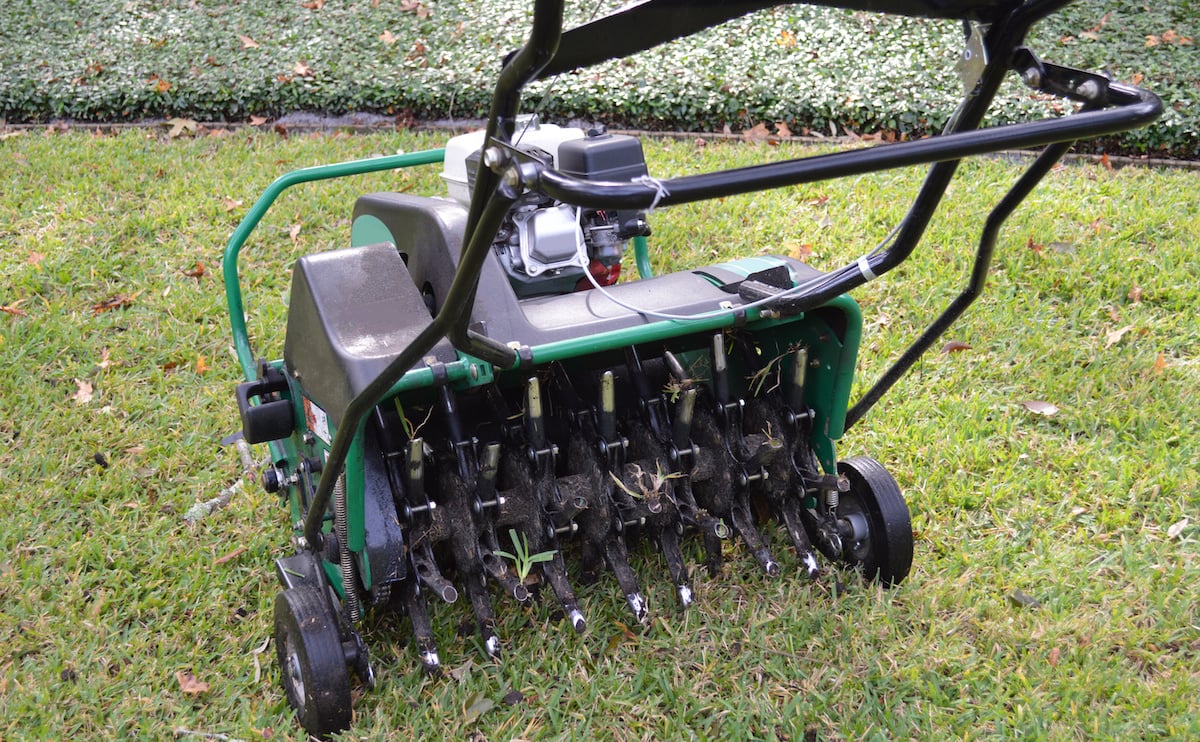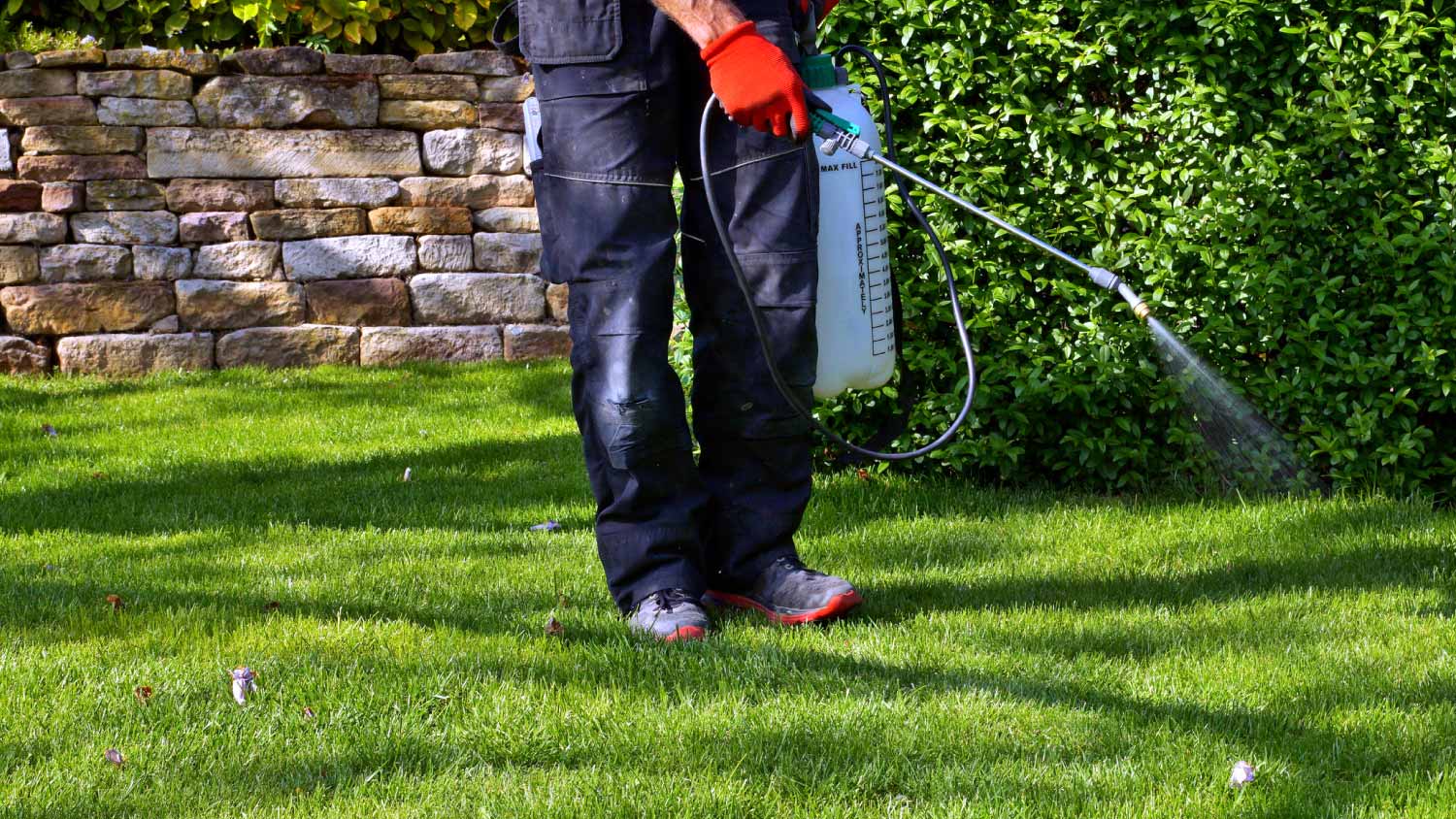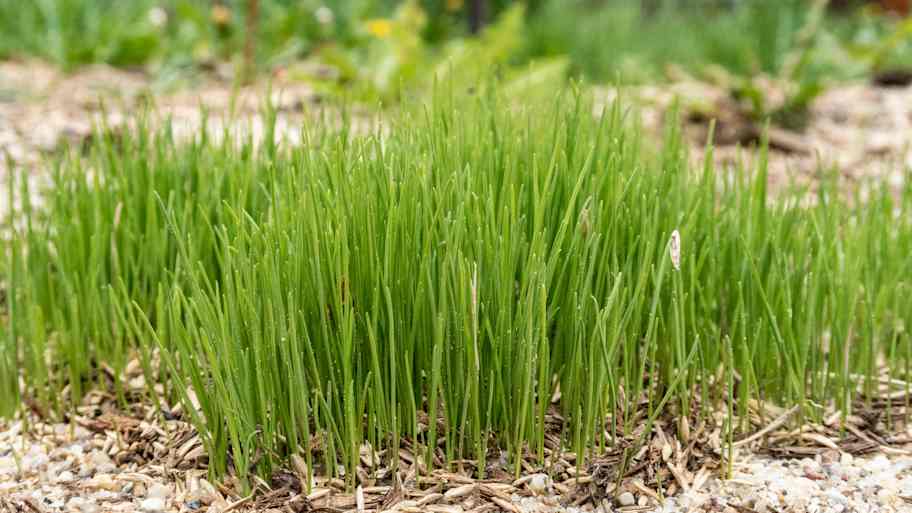
Discover the cost to fertilize your lawn, including average prices, key factors, and tips to help homeowners budget for a lush, healthy yard.
Lawn aeration cost averages $140, with homeowners spending between $45 and $400. Factors include lawn size, aeration type, labor, and frequency.


Lawn aeration costs are based on factors including lawn size, aeration type, and service frequency.
Aeration improves lawn health and soil quality, and regular maintenance boosts curb appeal and property value.
DIY aeration can save money but requires equipment, while professional services offer convenience and expertise at $0.10 to $0.35 per square foot.
This article was created using automation technology and thoroughly fact-checked and edited by an Angi Editor in accordance with our AI policy.
Lawn aeration costs range from $75 to $205 on average, with homeowners paying an average of $140 per service. Most lawn aeration pros charge $0.10 to $0.35 per square foot. Aeration reduces soil compaction and encourages healthy grass growth, making it a smart investment for homeowners. By understanding your options and what affects pricing, you can make the best decision for your lawn and budget.

Several factors influence what you’ll pay for lawn aeration. Let’s look at the main elements that determine your final bill.
There are several methods of lawn aeration, each with its own cost and benefits. The right choice depends on your soil condition, grass type, and goals for your lawn.
Core aeration removes small plugs of soil from the lawn, allowing air, water, and nutrients to reach roots more effectively. It’s the most popular option for compacted or clay-heavy soil and tends to be the most effective, but it often costs more due to specialized equipment. Using hand tools for coring small lawns can be cost-effective, but it requires significant time and effort.
Spike aerators poke holes in the ground without removing soil. This method is less expensive but may not relieve compaction as well as core aeration. It works best for sandy or lightly compacted soil. Liquid products are sprayed over the lawn to break up soil at a microscopic level. While convenient for DIYers, liquid aeration is less effective for heavy compaction and is priced per application.
| Aeration Type | Description | Cost per Service |
|---|---|---|
| Core | Removes soil plugs for deep aeration | $150–$300 |
| Spike | Punches holes into soil surface | $130–$250 |
| Liquid | Sprays solution to loosen soil | $120–$200 |
The size of your lawn has a direct impact on the total lawn aeration cost. Service providers often price by the square foot or offer flat rates for common yard sizes. Minimum fees apply for very small lawns to cover travel and setup. Larger lawns or properties over a quarter acre qualify for custom quotes.
| Lawn Size (Sq. Ft.) | Description | Average Cost |
|---|---|---|
| 500–1,000 | Small garden | $50–$350 |
| 1,000–5,000 | Townhome or small suburban lot | $100–$500 |
| 5,000–10,000 | Standard residential yard | $500–$650 |
| 10,000+ | Large yard or partial acre | $650+ |
How often you aerate your lawn influences your yearly lawn aeration cost. Most lawns benefit from annual aeration, though high-traffic or clay-heavy yards may need two services per year. Some companies offer discounts for recurring contracts or package deals.
Aerating in spring or fall is best, and prices can rise during peak demand seasons. Booking in advance or choosing less busy times may help you save.
Professional lawn aeration is performed by landscapers or lawn care companies. Labor rates vary by region, company size, and service model.
Lawn aeration professionals may charge per job, per hour, or by the square foot, and many charge fixed rates per 5,000 or 10,000 square feet. Labor rates often range from $40 to $75 per hour. For small jobs, minimum service fees or travel surcharges can apply. Lawns with steep slopes or many obstacles, like trees and flower beds, may cost more due to extra labor time.
Where you live can affect your lawn aeration cost. Urban areas and regions with higher living costs tend to have higher prices. Soil type and climate also play a role—clay-heavy soils may require more intensive work, and some regions have higher demand for aeration. Difficult-to-access lawns, like those on slopes or with limited gate access, may incur extra charges.
Tipping lawn aeration professionals is optional but appreciated, especially for exceptional service or challenging jobs. A tip of $10 to $20 per worker or up to 10% of the service price is common. Tipping is more expected for one-time or seasonal services than for contract work.
The ideal frequency for lawn aeration depends on grass type, soil condition, and usage. Most lawns benefit from annual aeration, but heavily compacted or high-traffic yards may need it twice a year.
Spring and fall are the best seasons for aeration. Aerating during peak growth helps grass recover quickly. Costs may rise during these busy times, so scheduling early can help you secure a spot.
Watch for these signs that your lawn needs aeration:
Water pooling after rain
Thick thatch layer
Slow grass growth or thinning patches
Hard, compacted soil underfoot
Your local climate affects timing. For example, cool-season grasses thrive when aerated in early fall, while warm-season grasses do best in late spring.
Many homeowners choose to bundle other lawn care services with aeration for improved results. These add-ons boost lawn health but increase your total lawn aeration cost. Combining services can sometimes unlock package discounts, so ask about bundled pricing.
| Add-On Service | Description | Average Cost |
|---|---|---|
| Overseeding | Spreads new grass seed for thicker growth | $0.20–$0.20 per sq. ft. |
| Fertilization | Adds nutrients after aeration | $70–$380 |
| Topdressing | Applies compost or soil amendments | $30–$150 per cu. yd. |
| Weed control | Treats weeds during or after aeration | $35–$400 |
| Irrigation system marking/repair | Protects or fixes sprinkler lines | $135–$415 |
Choosing between DIY and hiring a professional impacts both your costs and your results. DIY aeration can save money, but it requires time, effort, and the right equipment.
DIY costs include equipment rental or purchase, fuel, and your time.. Expect to spend a few hours on the project, depending on lawn size. DIY is best for small lawns and those comfortable with yard equipment. For large or complicated yards, or if you want guaranteed results, hiring a pro is the better choice.
Hiring a lawn aeration pro means paying more but gaining convenience, expertise, and a faster job. Lawn care professionals bring commercial-grade equipment and can spot issues you might miss. Labor and equipment are included in the quoted price.

A little planning can help you get the most value from your lawn care budget. There are several ways to save on lawn aeration cost:
Schedule aeration during off-peak seasons for possible discounts.
Bundle aeration with other lawn services like fertilization or overseeding for package deals.
Maintain your lawn year-round to reduce how often you need aeration.
Rent aeration equipment with friends or neighbors to split costs.
Ask about loyalty programs or recurring service contracts for additional savings.
Home is the most important place on earth, which is why Angi has helped more than 150 million homeowners transform their houses into homes they adore. To help homeowners with their next project, Angi provides readers with the most accurate cost data and upholds strict editorial standards. We’ve surveyed thousands of real Angi customers about their project costs to develop the pricing data you see, so you can make the best decisions for you and your home. We pair this data with research from reputable sources, including the U.S. Bureau of Labor Statistics, academic journals, market studies, and interviews with industry experts—all to ensure our prices reflect real-world projects.
Want to help us improve our cost data? Send us a recent project quote to [email protected]. Quotes and personal information will not be shared publicly.
From average costs to expert advice, get all the answers you need to get your job done.

Discover the cost to fertilize your lawn, including average prices, key factors, and tips to help homeowners budget for a lush, healthy yard.

Get transparent power seeding cost info to learn what impacts pricing, how to save, and whether to DIY or hire a pro for your lawn’s best results.

Discover average hydroseeding cost, key price factors, and ways to save. Get transparent estimates for your lawn project and make informed decisions for your home.

When your grass keeps dying where a tree used to be, it’s likely because there is a nutrient deficit in the soil in that area. Here’s how to fix it.

Ready to give your yard a fresh start? With these tips for grass seed planting, your lush lawn dreams are one step closer to becoming a reality.

If you’re looking to apply fertilizer to your lawn, there are a few things you need to get right first. Make sure you’re ready to answer these lawn fertilizer questions before you start.